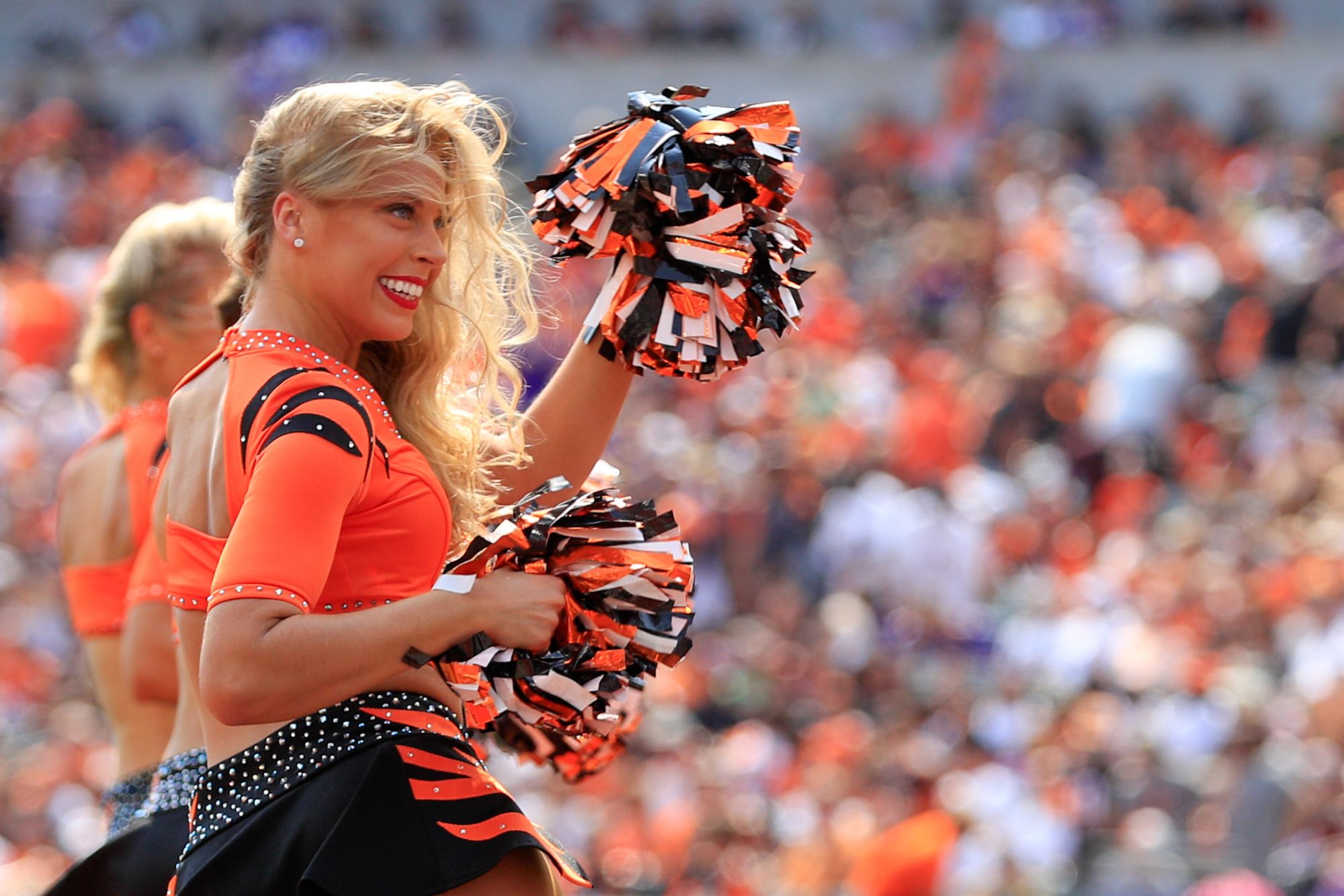This weekend when the Los Angeles Rams and Cincinnati Bengals take the field on Super Bowl Sunday, it will mark the return of cheerleaders to the biggest sports event in the United States, after they were barred from the field last year due to pandemic restrictions.
And though today the commercials and halftime show may often spark more internet chatter than those cheering from the sidelines, what cheerleaders represent – and what they wear – has long been a topic of public interest, raising questions about gender stereotyping and the fair treatment of cheer athletes.
That’s been the case since the Dallas Cowboy cheerleaders were broadcast in the 1970s on national television in cropped long-sleeve blue tops, white vests and white Daisy Dukes – an outfit that’s now in the collection of the Smithsonian. This breakaway from the pleated skirts and modest tops seen throughout the 1960s ignited a fire.
It was “unlike anything seen in professional sports,” said Sarah Hepola, author and host of the Texas Monthly podcast “America’s Girls,” which examined the cultural influence of the squad, who served as the inspiration for all future teams in both style and routines.
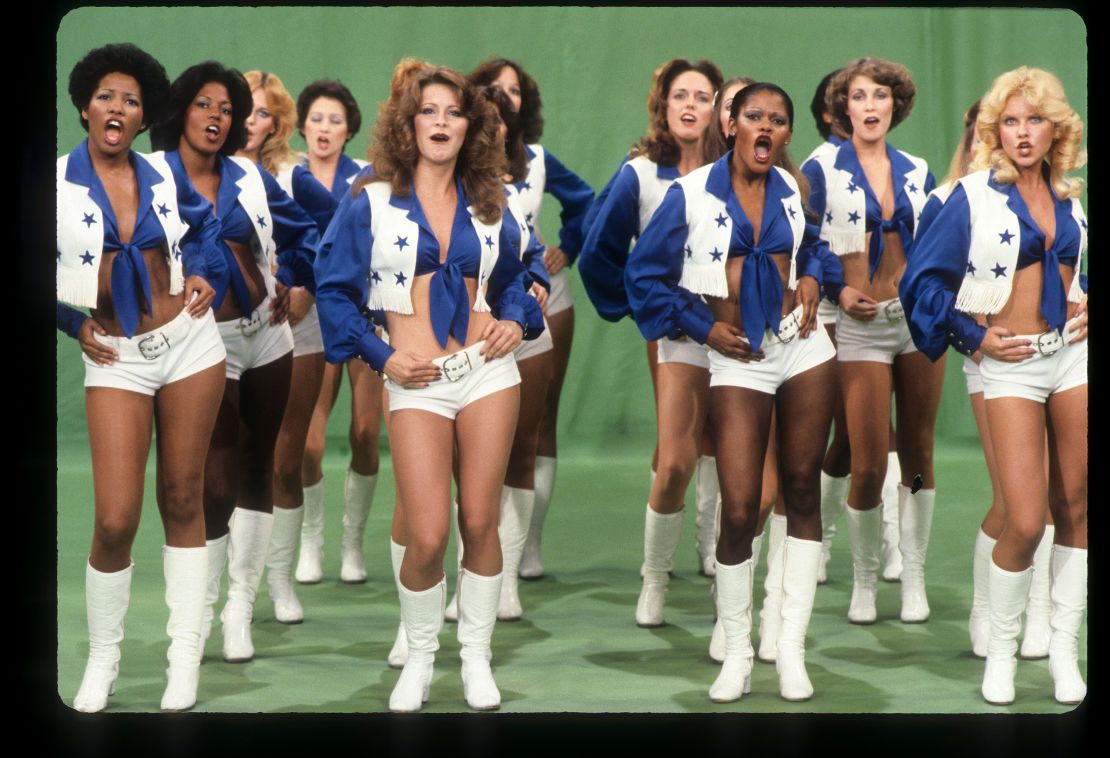
“(They) definitely had a domino effect in NFL cheerleading in particular. I don’t think any other teams have made quite the same impact,” said Mhkeeba Pate, host of “Pro Cheerleading Podcast: The Truth Behind The Poms,” in a phone interview. Pate was a Seattle Seahawks Sea Gal (the cheer squad has since rebranded to the Seahawks Dancers) between 2011 to 2016.
Pate’s own uniform for the Seahawks was a similar style but with a nautical spin: a low-cut, cropped white top with billowing sleeves and a rhinestone encrusted sailor collar; itty-bitty belted white shorts; and white go-go boots.
“When (you have) on that uniform, it elevates your whole sense of importance – the way that you move, and your posture when you’re standing on the sidelines,” she recalled. “It all just speaks for you and you have to match that with the way that you carry yourself.”
‘Toned-down’ uniforms
The cheerleading uniform varies between divisions – professional sports, scholastic and competitive All Stars cheering – and has come to convey many different things: popularity, pride, spirit, sex, determination, grit.
Men may have been the first cheerleaders, wearing preppy sweaters and slacks (until World War II changed the sport’s demographics). But the cheer uniform has since been an enduring if complicated symbol of American femininity in pop culture, encompassing strait-laced Sandy in “Grease” and questioning Megan in the LGBTQ+ cult classic “But I’m a Cheerleader.” Some uniforms have become famous: Actor Gabrielle Union and her young daughter went viral in 2019 wearing matching Clovers uniforms from the “Bring it On” franchise, which Union starred in two decades earlier, while model Kendall Jenner got her own Navarro uniform from the Netflix docuseries “Cheer” on the Ellen DeGeneres Show last year.
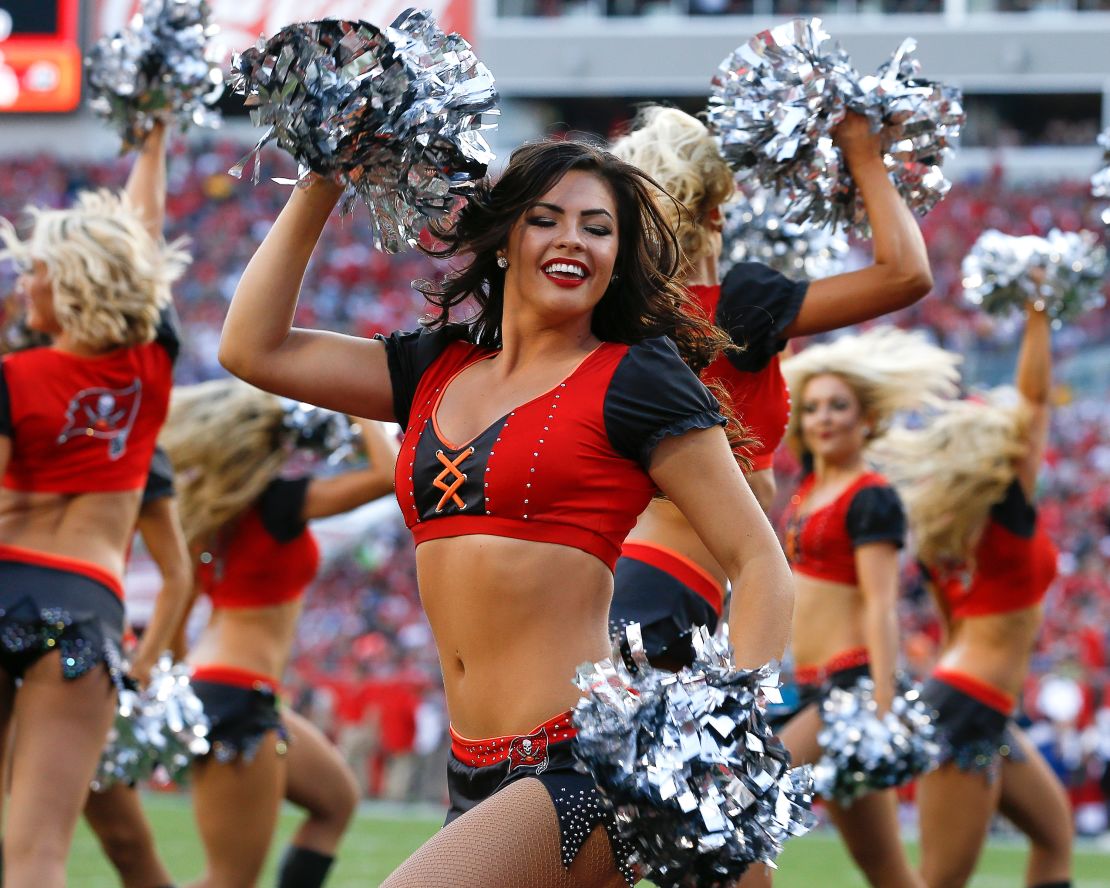
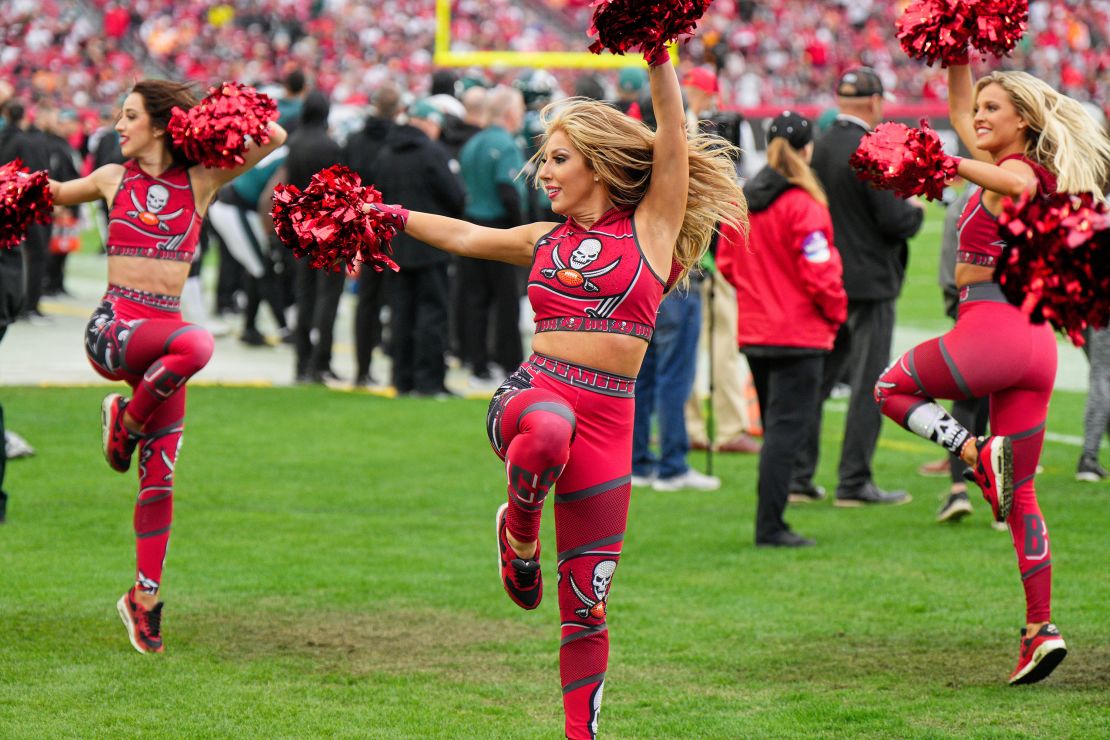
But while scholastic and All Stars uniforms are often collegiate and sporty in style, NFL squads have historically focused on glamour, sex appeal and themed looks. The Denver Broncos cheerleaders have channeled Western vibes with matching vests and chaps, while the Tampa Bay Buccaneers’ squad for many years favored feminine pirate styling with lace-up bra tops and jagged mini skirts.
The past few years have seen shift, though, as NFL teams have rolled out more athletic and less revealing looks. The Buccaneers cheerleaders traded in their miniskirts and bra tops for leggings and cropped shirts; the Minnesota Vikings have moved away from their ruffled, off-the-shoulder tops for a workout-inspired design; and this year, Cincinnati’s Ben-Gals squad introduced a less revealing, sportier top as well.

In 2018, the Indianapolis Colts cheerleaders unveiled one-piece dresses that resembled ice skater’s costumes before bringing back more streamlined cropped tops with high necklines this past season. The newly renamed coed New Orleans Saints Cheer Krewe (formerly the Saintsations) has made a couple of different outfit changes for female squad members since 2018, first ditching their gold two-pieces for a 1970s-style belted long-sleeve jumpsuit, then adopting a more collegiate-looking design with flouncy skirts this past season. Pate called the trend “a movement away from the glamour uniform.”
“It’s definitely more toned-down,” she said.
Some new uniforms were introduced as teams became coed and were rebranded as dance or entertainment teams – but in other cases, the changes were made in an effort to overhaul the image of NFL cheerleading.
“This new approach is designed to elevate the Colts cheerleaders as one of the top cheer and dance squads in the NFL by departing from many of the stereotypes often associated with professional cheerleading and redefining what it means to be a cheerleader and an athlete-performer,” the Colts told USA Today in 2018.
Pom-poms & pornos
While the past few years have given rise to more conversations about the image and treatment of cheerleaders, the origins of this debate can be found in the reactions to those infamous Dallas Cowboys designs of the 1970s.
“While it doesn’t sound racy to us, at the time, you’ve got bare midriffs, you’ve got a shirt that ties at the rib cage in a way that emphasizes cleavage,” Hepola described in a phone interview. “You’ve got hot pants, go-go boots.” The blue star details on white also loosely invoked the American flag, she pointed out, adding patriotic appeal.
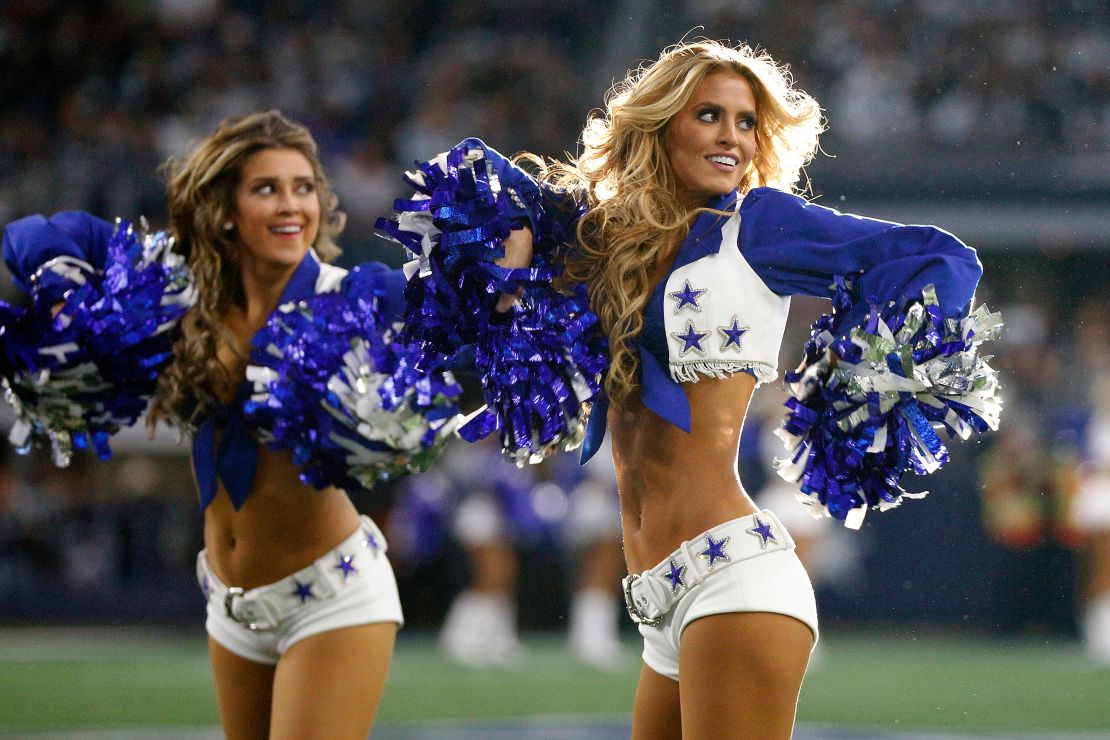
When the 1976 Super Bowl match-up between the Dallas Cowboys and Pittsburgh Steelers aired to more than 70 million people, the Texas cheer team skyrocketed to fame. Over the next few years, they made television appearances and sold posters and other merchandise and became the subject of a made-for-TV movie starring Jane Seymour that drew 48 million viewers.
Dana Adam Shapiro, director of “Daughters of the Sexual Revolution: The Untold Story of the Dallas Cowboys Cheerleaders,” characterized the phenomenon in a 2018 ESPN interview, saying, “They were equally loved and loathed.”
“They were pinups – their poster outsold Farrah Fawcett – and they were also attacked by religious groups and by feminist groups,” Shapiro said.
Other squads followed, trying to reach the same level of fame. The uniform “was so popular that (the Dallas Cowboy cheerleaders) quickly had to trademark it because so many different squads were imitating them,” Hepola said.
But the politics of cheerleading uniforms were taking shape, led by the question of how sexy these women should be and who gets to decide.
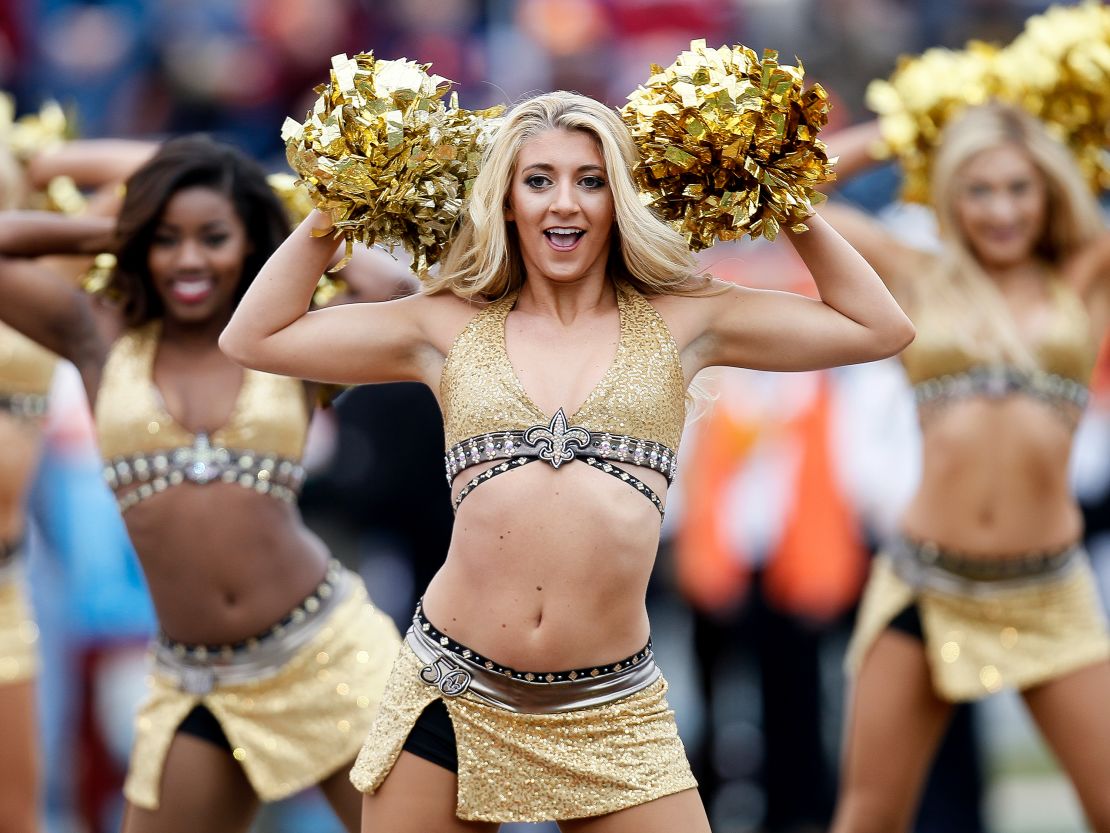
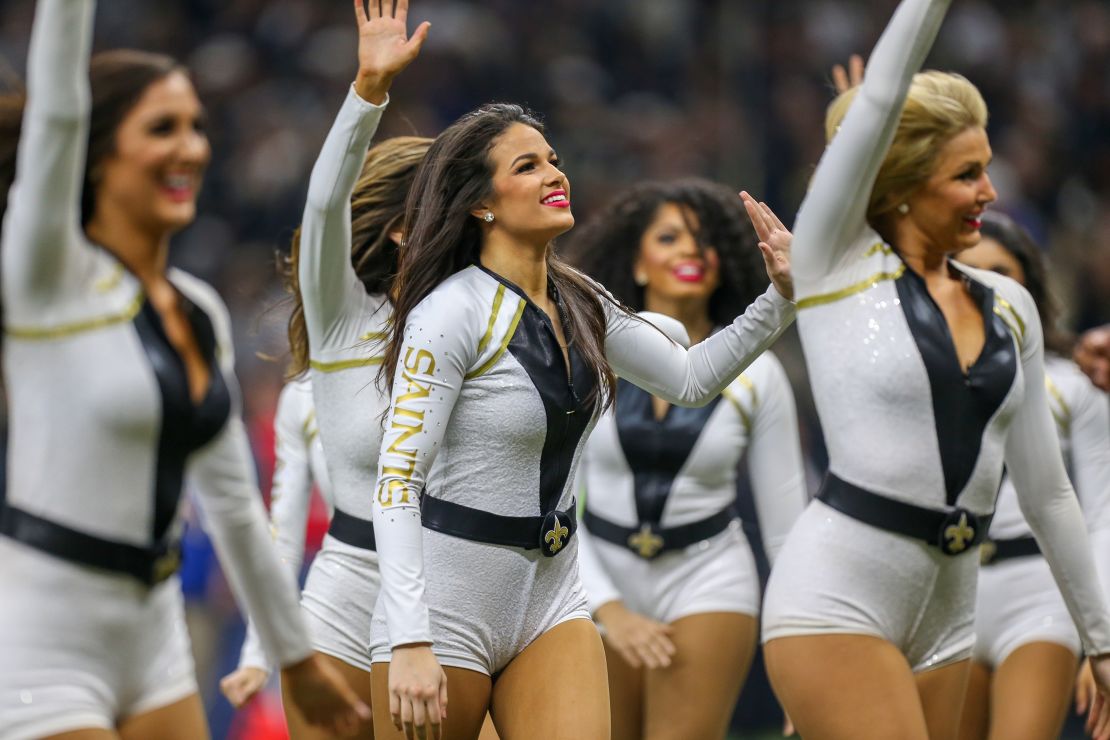
In 1978, Playboy capitalized on the girl-next-door image that NFL cheerleaders had cultivated, asking women from different teams – as well as five former Dallas Cowboys squad members – to pose. The cover caused a scandal, and, in an incident later chronicled by the 2018 documentary “Sidelined,” an entire squad – the San Diego Chargettes – was fired before the issue hit newsstands. The Cowboys uniform was infamously copied for the porn flick “Debbie Does Dallas,” which follows a high school cheerleading captain as she tries out for the fictional Texas Cowgirls squad. The Dallas Cowboys Cheerleaders, Inc. (a subsidiary of the Dallas Cowboys football club) sued in 1979 and ultimately won a trademark lawsuit against the New York cinema that made it, but the case had an unintended effect, Hepola said.
“It’s a shoestring porno. Nobody’s really paying attention to it,” Hepola said. “And suddenly, this shoestring porno becomes one of the top five porns of all time because of the landmark trademark lawsuit.”
Tackling the wrong problem
Now, as NFL cheerleading uniforms trend toward more athletic styles, Hepola believes there’s been a cultural shift.
“You have to look at your audience. And not just men, but also women, who are a large part of conversation,” she said. “I believe the fantasy they want to sell these days has a lot more to do with athleticism and strength than sex appeal and beauty.”
But Pate is wary of the motivations to tone down the uniforms.
“There were teams that wanted to distance themselves from the image of a sexy, beautiful cheerleader to focus more on (being) professional athletes, which I can applaud on certain levels, because we are athletes,” she said.
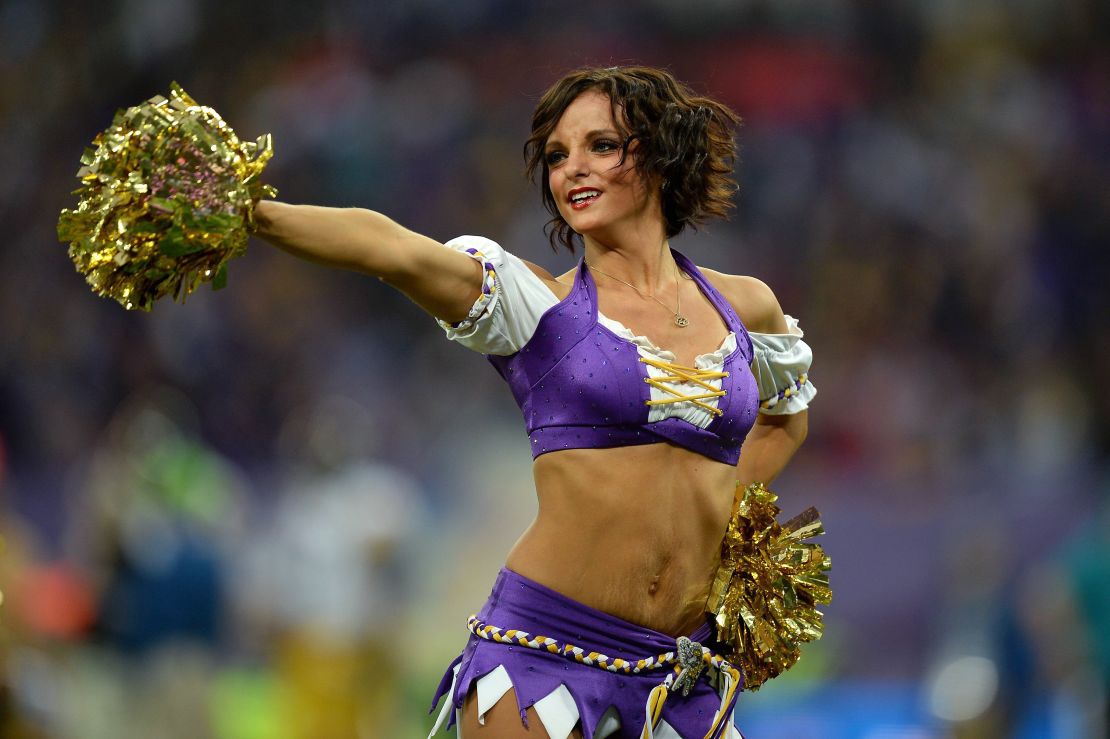
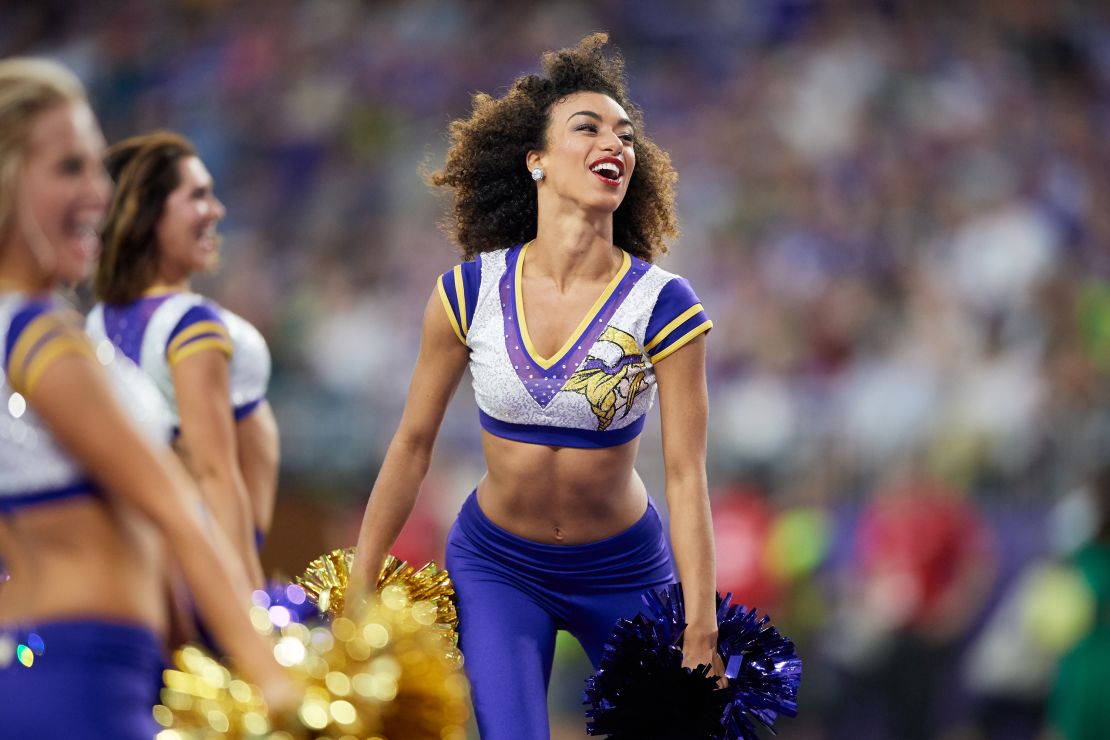
But, pointing to deeper issues around equity that NFL cheerleaders say they have faced, including low pay, discriminatory practices and sexual harassment, Pate worries the emphasis on uniforms gives too much weight to the wrong problem.
“The solution is to cover them up, change what they’re wearing, change how they’re dancing,” Pate said. “I think it’s misguided…(the uniforms) weren’t the issues to fix.”
Last year, the documentary “A Woman’s Work: The NFL’s Cheerleader Problem” brought to light that, at the time of filming, 10 of the 26 NFL teams with cheerleading squads had been sued for wage theft, unsafe work conditions, sexual harassment and discrimination.
“It’s really a microcosm into what all women are facing right now in the workplace, battling these stereotypes and these hypocritical standards that we’re faced with,” the documentary’s director, Yu Gu, told CNN. At the time, CNN spoke with former NFL cheerleaders who said their earnings were below minimum wage; they were unpaid for training, team practices and public appearances; and they were expected to pay for uniforms and equipment themselves.

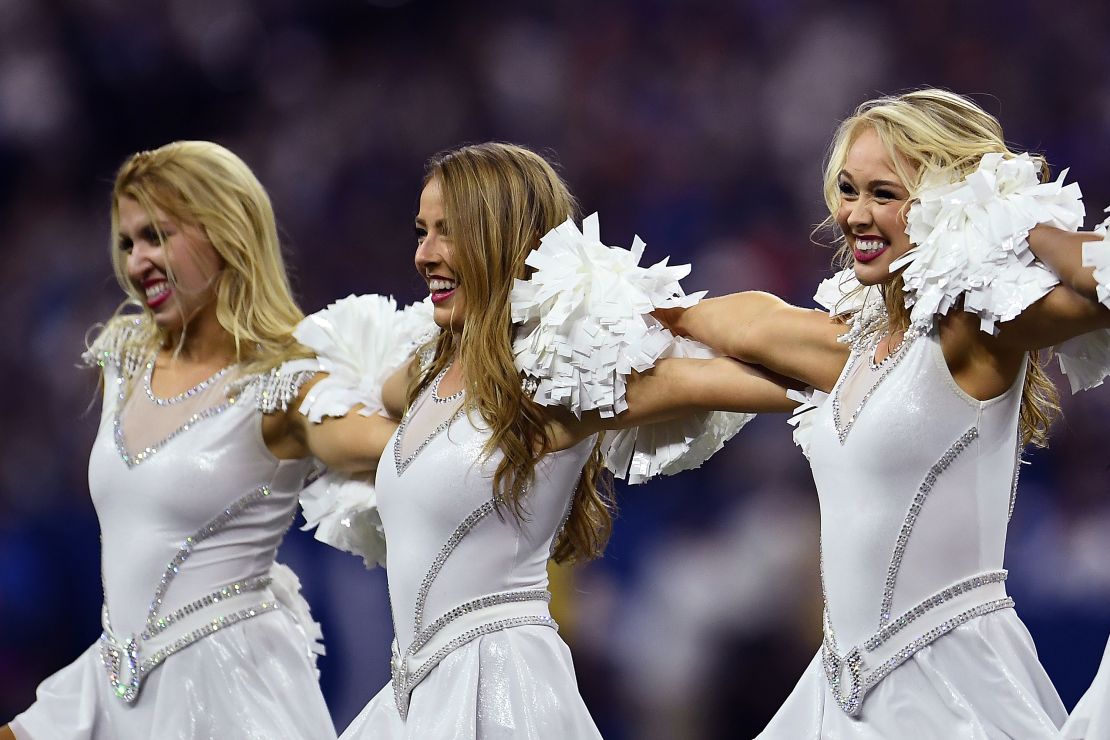
Pate said she believes that changes in the system are necessary, but they need to come through a shift in culture or attitudes – not a change in clothes.
“I think if there was a little bit more respect and understanding of what we do and how hard we work to wear that uniform…I think the critique (against our outfits) would be a lot more fair and balanced,” she said, emphasizing that cheerleaders are worthy of respect regardless of what they are wearing. “Overall it speaks to the larger society and lack of respect for women’s bodies and choices that we make around our bodies and how we represent ourselves.”
“We’ve reached the top tier level of our sport,” she added. “That’s why it means so much to these men and women – because (we’ve) earned it.”
